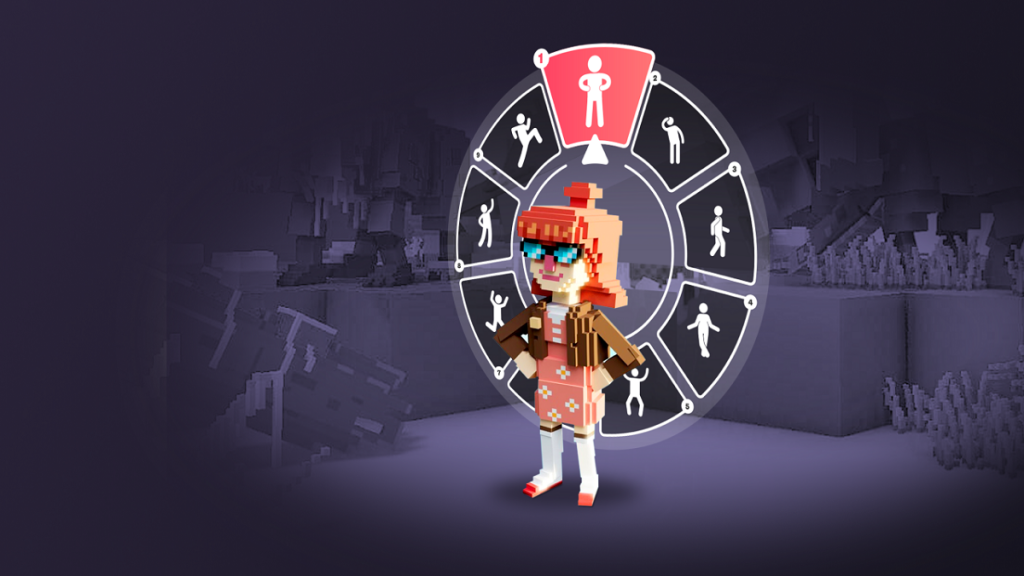Kinetix Co-Founder and CEO Yassine Tahi dives into the history of emotes in games and explores the rapid evolution underway today.
The ability to express ourselves in games has steadily evolved over the years. In online worlds, we see our avatars as an extension of ourselves. The growing ability to customise them, such as through the clothes they wear, their build, facial features and hairstyles has empowered players to create something unique that reflects their individuality and creativity. Characters in online worlds are becoming as unique as our real world selves. It’s a lucrative market, too, with the digital human avatar market estimated to be worth more than $500 billion by 2030.
In recent years, emotes have become popularised as one of the primary methods of self-expression and personalisation of avatars in games and larger online worlds. Dances and gestures such as the Floss and Take The L helped build Epic Games’ Battle Royale title Fortnite into a global phenomenon, as players could not only customise their avatar’s appearance, but give it life through animations that express emotion.
Emotes have become popularised as one of the primary methods of self-expression and personalisation of avatars in games and larger online worlds
Yassine Tahi
With the launch of Fortnite Creative 2.0 democratising the power of the Unreal Editor, and Roblox’s plans for a generative AI tool that enables content creation and customisation from text prompts, we’re truly entering the era of user-generated content (UGC) in gaming. Opportunities for self-expression have never been greater. But, although it may seem as though all of this is brand new, self-expression through gaming – and even emotes – have deep roots.

Decades of progress
It wasn’t this way at the very beginning, of course. Back in the early days of video games, avatars were ready-made as one entity, and the entire experience was simply about the mechanics of the core gameplay. In multiplayer titles, the most customisation you might get was having a different colour; one likely not of your choice.
But the rise of the internet in the 90s, which had the potential to power a new kind of multiplayer experience and create social communities for people across the globe, spawned new online worlds. The classic fantasy game EverQuest, developed by Verant Interactive and 989 Studios and launched in 1999, became one of the world’s first 3D MMORPGS, achieving enormous success, reaching 150,000 subscribers in just its first six months. The title not only enabled the customisation of avatar appearances, but introduced some of the earliest emotes into the gameplay, giving the game an enormous injection of personality.
In 2003, Linden Lab‘s online virtual world Second Life took customisation and emotes to an entirely new level. Players could create the world around them and make an array of customisations to their character’s appearance. On top of that, though, was a serious advancement in emotes, helping bring avatars to life and showcase their personality. The title even delivered a whole new dance emote economy, giving players the opportunity to animate their own dances and sell them to others. In total, during 2021, Second Life had an annual GDP of $650 million, powered by user-generated assets such as those dance emotes, as well as real estate and other virtual goods.
In the years since, many online worlds have integrated emotes, largely focused on dancing, from RuneScape and World of WarCraft to Destiny and Overwatch. But it was Fortnite that really took emotes into the mainstream. In the early days of the title becoming a global phenomenon, Fortnite was everywhere, and the emotes took on a life of their own. Sports stars were celebrating with dances mimicking those from the game, while the #emotes hashtag has generated some 2.5 billion views to date on TikTok.

Building a digital identity
Players now have an array of options for customising the appearance of their avatar and since those early examples, more games and platforms have launched their own emotes (although these can be fairly limited in scope due to the technical barriers of 3D animation and coding). But, as the real and virtual worlds converge, users are demanding more.
Emotes can provide a form of self-expression and identity that elevates player interaction and brings life to the world
Yassine Tahi
In the real world, body language forms a hugely important element of how we communicate and interact with each other. For players to be truly immersed, a virtual space should be no different. Emotes can provide a form of self-expression and identity that elevates player interaction and brings life to the world. They can be used to convey an individual’s personality or to create a sense of community and belonging. They can help convey emotions and reactions in a much more nuanced and expressive way than text – or even voice – alone can do. This can be especially important in virtual environments where users may not have the benefit of nonverbal cues and body language to help convey their true meaning.
And, to create a true digital identity in a space where users spend a substantial amount of time – Roblox racked up 56 million average daily active users and 49.3 billion hours of gameplay in 2022 – the ability to create our own set of moves, gestures and celebrations is the clear next step.
Democratising emotes
Recent developments in motion capture, AI technologies and low and no-code tools represent a further democratisation of the game development toolset. The next evolution of emotes in virtual worlds is to put their creation into the hands of the players and creators themselves.
Cast your mind back to the beginning of this piece and remember the examples of Roblox and Fortnite Creative. By letting players make their own dances, gestures and celebrations as well as their own worlds and avatars, they will feel more immersed than ever, creating a better experience and empowering users to form a unique, digital identity they can truly call their own.
A huge upshot of this is the opportunity to promote and embed sustainable business models between games, platforms and creators which provide a more equitable form of revenue sharing. Just as Facebook Gaming and Kick have made a play for some of Twitch’s most popular streamers, and Instagram and YouTube have responded to the threat of TikTok with enhanced short-form video offerings, so gaming platforms will compete for content creators. By incentivising them through favourable revenue share and seamless tech tooling, gaming platforms will encourage creators to create and integrate assets into their games.
By incentivising [creators] through favourable revenue share and seamless tech tooling, gaming platforms will encourage creators to create and integrate assets into their games
Yassine Tahi
None of this will require the advanced rigs or skilled 3D artists and animators used by the top AAA publishers, though of course there will still be a role to play for these blue chip technologies and talents. The latest no-code solutions and AI tech can empower anyone to easily create emotes, distilling 3D artistry and animation into easy-to-use tools for everyone.
This not only alleviates the workload of professional game developers in studios of all sizes, but empowers creative UGC at scale, and offers an opportunity for genuine self-expression for players in experiences we’d never even dreamed of. That’s what online gaming and virtual worlds are all about.
About the author
Yassine Tahi is co-founder and CEO of Kinetix. Born in Morocco, Tahi graduated from HEC Paris and Sciences Po. As a huge fan of games and animated films, he chose to pursue his passions by founding Kinetix in 2020. His experience in strategic consulting at Eleven and in VC at 212 Founders gave him a front-row seat to the potential of AI technology for the creative industries. Under Yassine’s leadership, Kinetix is now building its AI animation platform to enable creators to bring their talent to Web3 and Metaverse platforms.
Steve is an award-winning editor and copywriter with more than 20 years’ experience specialising in consumer technology and video games. With a career spanning from the first PlayStation to the latest in VR, he's proud to be a lifelong gamer.






































